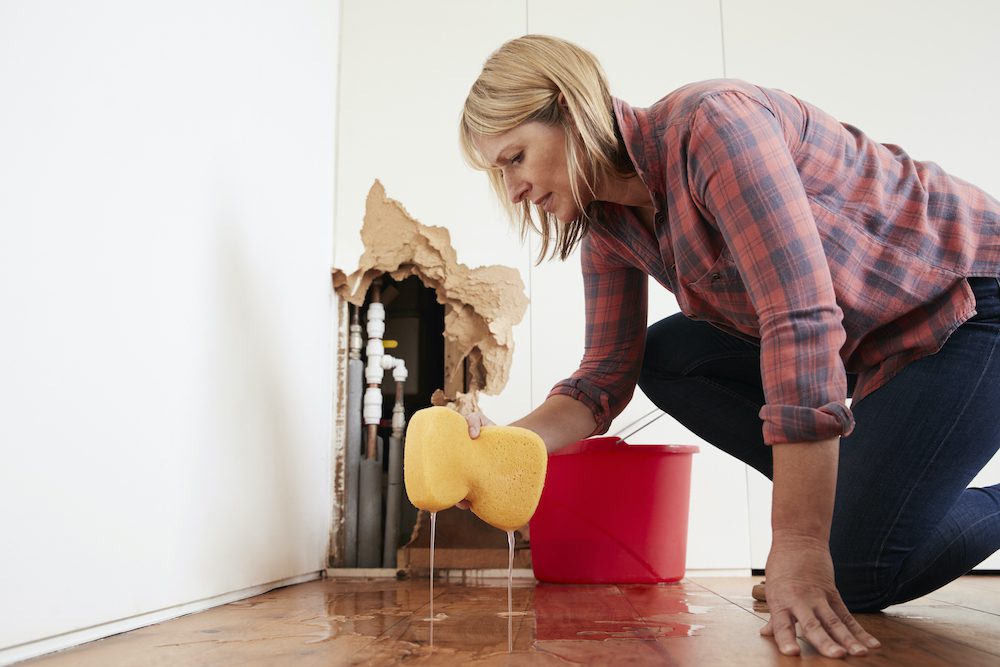Just how to Examine If Your Residence Has a Concealed Leak
Just how to Examine If Your Residence Has a Concealed Leak
Blog Article
We have stumbled on this post involving Detecting hidden plumbing leaks down the page on the internet and figured it made sense to write about it with you here.

Early discovery of dripping water lines can reduce a prospective disaster. Aside from conserving you money, it will certainly lessen the aggravation and stress. The minute you locate a leak, calling your plumber for repairs is the best service. Nevertheless, some little water leakages may not show up. If you can not detect it with your nude eyes, right here are some hacks that help.
1. Analyze the Water Meter
Inspecting it is a proven method that assists you find leaks. If it moves, that suggests a fast-moving leakage. This implies you might have a slow-moving leakage that could also be below ground.
2. Check Water Usage
If you detect unexpected adjustments, in spite of your consumption being the very same, it suggests that you have leakages in your plumbing system. A sudden spike in your costs suggests a fast-moving leakage.
A stable rise every month, even with the same behaviors, shows you have a slow-moving leakage that's also slowly escalating. Call a plumber to extensively inspect your building, especially if you really feel a cozy area on your floor with piping underneath.
3. Do a Food Coloring Examination
When it comes to water consumption, 30% comes from commodes. Test to see if they are running appropriately. Decline flecks of food color in the storage tank as well as wait 10 minutes. There's a leak in between the container as well as bowl if the shade somehow infiltrates your dish throughout that time without flushing.
4. Asses Exterior Lines
Don't fail to remember to check your exterior water lines also. Must water permeate out of the link, you have a loosened rubber gasket. One little leakage can throw away bunches of water and also spike your water costs.
5. Examine the circumstance as well as inspect
House owners should make it a habit to check under the sink counters and also even inside cupboards for any kind of bad odor or mold and mildew growth. These 2 warnings suggest a leak so punctual attention is needed. Doing routine evaluations, also bi-annually, can conserve you from a major issue.
Examine for discolorations as well as damaging as the majority of pipelines as well as home appliances have a life expectancy. If you presume dripping water lines in your plumbing system, do not wait for it to escalate.
Early discovery of leaking water lines can minimize a possible disaster. Some small water leaks might not be noticeable. Checking it is a surefire way that helps you find leaks. One small leakage can squander lots of water and increase your water costs.
If you think dripping water lines in your plumbing system, do not wait for it to intensify.
WARNING SIGNS OF WATER LEAKAGE BEHIND THE WALL
PERSISTENT MUSTY ODORS
As water slowly drips from a leaky pipe inside the wall, flooring and sheetrock stay damp and develop an odor similar to wet cardboard. It generates a musty smell that can help you find hidden leaks.
MOLD IN UNUSUAL AREAS
Mold usually grows in wet areas like kitchens, baths and laundry rooms. If you spot the stuff on walls or baseboards in other rooms of the house, it’s a good indicator of undetected water leaks.
STAINS THAT GROW
When mold thrives around a leaky pipe, it sometimes takes hold on the inside surface of the affected wall. A growing stain on otherwise clean sheetrock is often your sign of a hidden plumbing problem.
PEELING OR BUBBLING WALLPAPER / PAINT
This clue is easy to miss in rooms that don’t get much use. When you see wallpaper separating along seams or paint bubbling or flaking off the wall, blame sheetrock that stays wet because of an undetected leak.
BUCKLED CEILINGS AND STAINED FLOORS
If ceilings or floors in bathrooms, kitchens or laundry areas develop structural problems, don’t rule out constant damp inside the walls. Wet sheetrock can affect adjacent framing, flooring and ceilings.
https://www.servicemasterbyzaba.com/blog/how-to-detect-water-leakage-in-walls/

Hopefully you enjoyed our article about Leaking water lines. Thank you so much for taking the time to read our post. Sharing is caring. You never know, you may very well be helping someone out. Bless you for your time. Visit us again soon.
Report this page